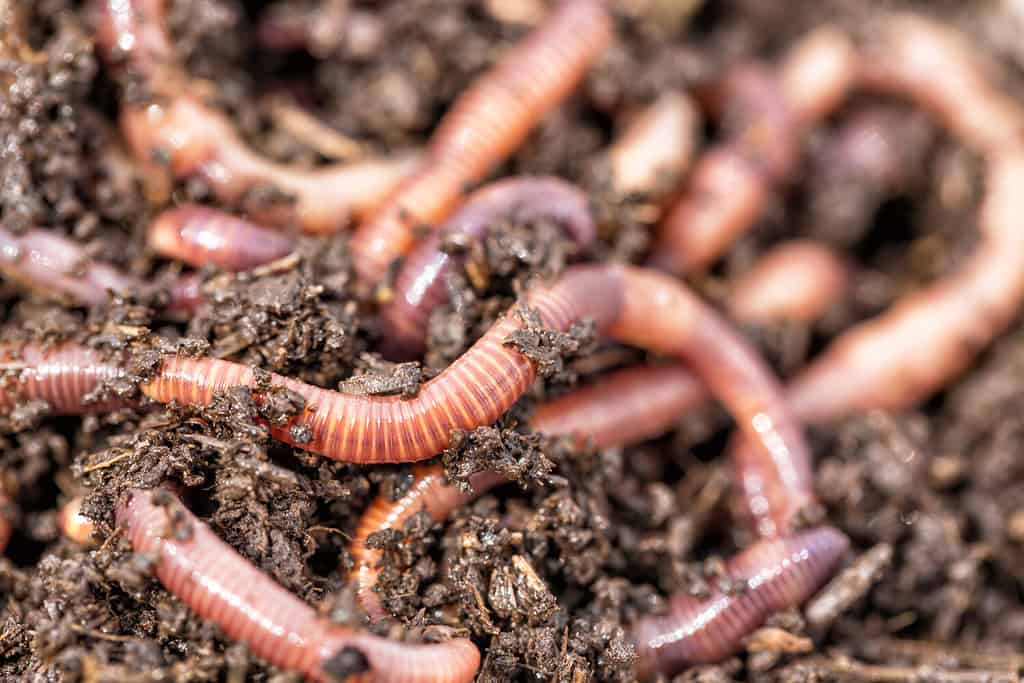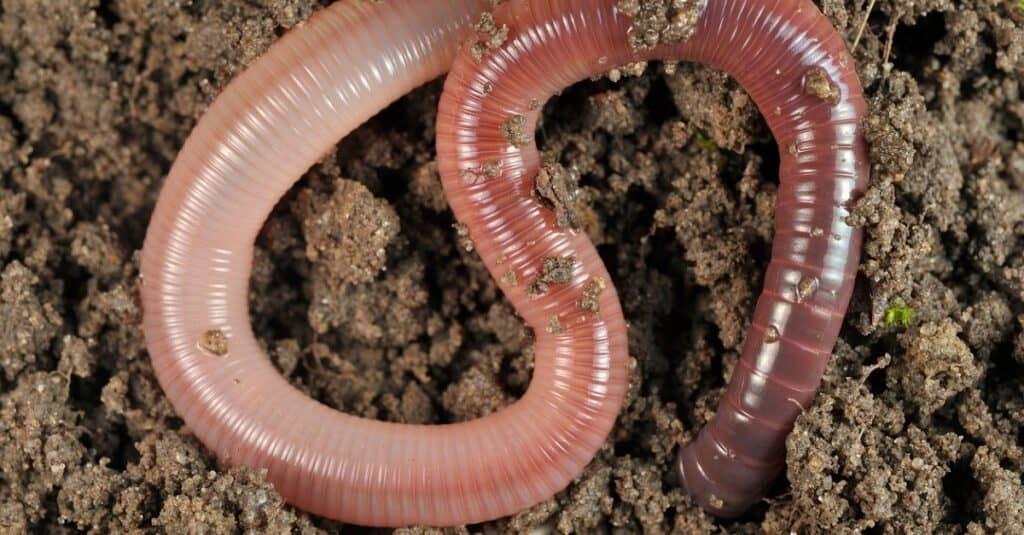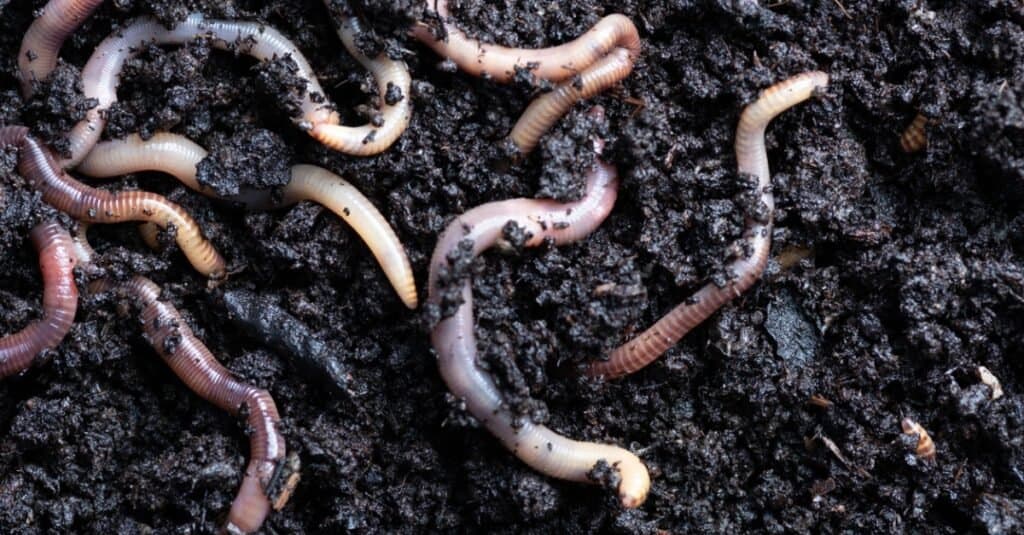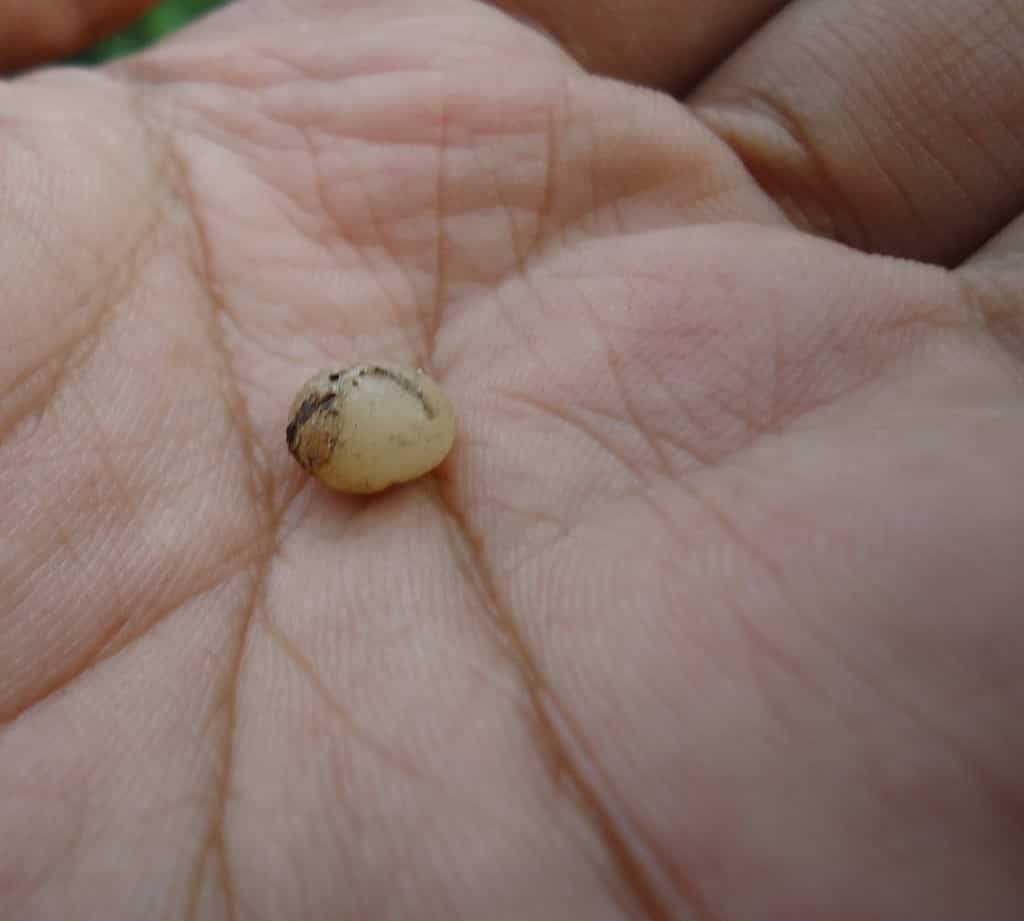Though they may look like simple creatures, earthworms are anything but. In fact, Charles Darwin spent 40 years observing worms and conducting experiments with them. Worms are crucial for breaking down organic matter; their castings (or worm excrement) make for excellent fertilizer. All in all, worms are the heroes beneath our feet. But how many worms are there, and how do worms reproduce?
How Many Worms Are There?

There are at least 20,000 worm species, and they also belong to several different animal groups.
©Nick N A/Shutterstock.com
There are about 2,700 kinds of earthworms. Some estimate that there are over 57 million worms around the world. So don’t worry; they aren’t anywhere close to extinction. In fact, over one million earthworms can reside in just one acre of land.
How Do Worms Reproduce?

While earthworms have both male and female reproductive organs, they still need a mate to reproduce.
©iStock.com/K-Kucharska_D-Kucharski
Earthworms are hermaphrodites. That means that they have both male and female sex organs. An earthworm can make sperm and egg in its body. However, this doesn’t mean earthworms can reproduce independently! Most species need a mate to reproduce.
When mating, two earthworms will line up next to each other with their heads pointing in opposite directions. Then, sperm is exchanged between the two worms and stored in sperm receptacles. Eggs are not exchanged. Each earthworm has a pair of ovaries that will produce its own eggs.
Then, the clitellum forms a slimy ring around the worm. The worm backs out of the ring, forming a cocoon. As it passes through this cocoon, eggs from the female pore are picked up and pass over the male pore where the sperm is stored. As the worm wiggles out of the cocoon, the fertilized eggs are deposited, and the cocoon is sealed shut. The cocoons are very small, no bigger than a grain of rice, and yellowish in hue. From there, the eggs incubate and develop into baby worms.
Worms may generate anything from 3 to 80 cocoons every year and will continue to do so as long as there is a sperm supply.
How Do Worms Find a Mate?

Even though worms do not have eyes, ears, or limbs, they can still find a mate to reproduce.
©iStock.com/Steve Jones
As you may have noticed, worms do not have eyes, antennas, or feelers. So, how in the world do they find a mate? The answer: pheromones. It is believed that earthworms secrete pheromones to attract a mate.
What Is a Worm’s Gestation?

Often, a worm’s cocoon is no bigger than a grain of rice.
©Obsidian Soul, CC0 – License
Once deposited in the cocoon from the parent worm, the baby worm’s gestation period is about two to three weeks. Around one to five baby worms hatch from a cocoon. When they hatch, the baby worms, or hatchlings, are only about half an inch long and translucent white in color. The hatchlings immediately burrow into the soil and start their development journey.
How Long Does It Take a Worm to Reach Adulthood?
The hatchlings take between forty to sixty days to develop into adults. By the end of six to eight weeks, the worms have developed their reproductive organs and can reproduce. By their first year of life, these worms are full-size.
Worm Lifespan

Since worms are at the bottom of the food chain, their lifespans are short.
©Laura Ojalvo Ortega/Shutterstock.com
On average, an earthworm lives about four to eight years under field conditions. However, most garden-dwelling worms only live to be one to two years old. Because earthworms are at the bottom of the food chain, very few of them live long enough to see retirement. Some common predators of the worm are centipedes, birds, snakes, lizards, toads, moles, badgers, and more.
Another factor that impacts a worm’s lifespan is moisture. About 75 percent of an earthworm’s body weight is water. So, dry conditions are very dangerous for a worm. If their skin dries out, they die.
Finally, pesticides and insecticides are another element that can cut a worm’s life short. Depending on exposure and the pesticide concentration, it can be toxic for the worm and affect its reproductive capabilities.
Commercial Earthworm Production
Many people raise earthworms as a hobby or as a source of income. Some breed earthworms to sell as bait or to pet stores that carry worm-eating pets. Others sell their worms to gardeners who need to revamp their soil composition or businesses with large-scale waste disposal systems. All in all, knowing how worms reproduce and giving them ideal living conditions will benefit your commercial earthworm production.
The photo featured at the top of this post is © iStock.com/PhotographyFirm
Thank you for reading! Have some feedback for us? Contact the AZ Animals editorial team.







